Read Reviews
The Best Work Lights
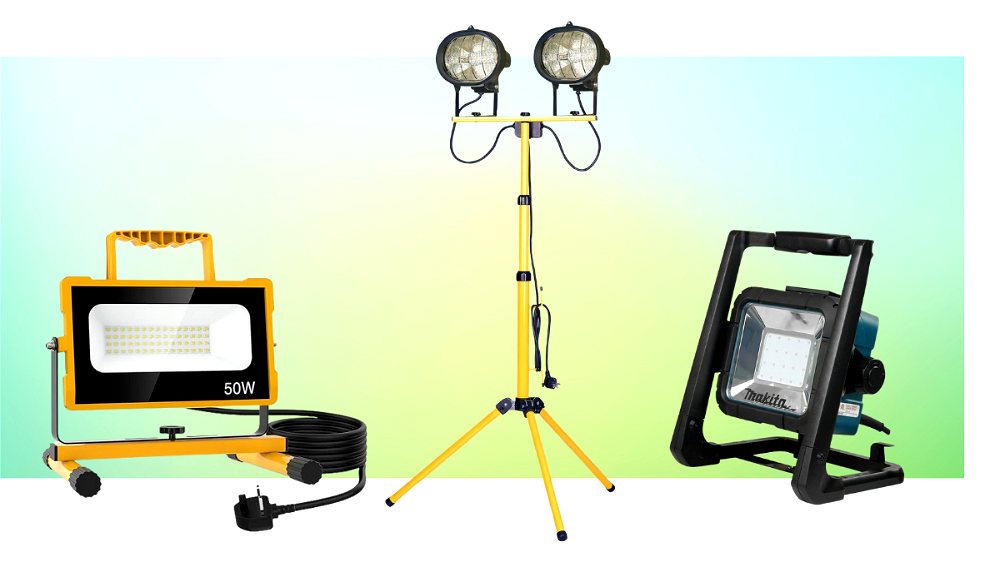
-
Makita DML805 14.4/18 V Corded and Cordless LED Work Light
-
Olafus 50W LED Work Light
-
Edasion 20 W LED Rechargeable Work Light
-
FLOWood 10W USB Portable LED Work Light,1000 Lumen Rechargeable
-
Faithfull PowerPlus SL1000CT Sitelight Twin Stand
Work Light Reviews
- Using on mains or battery power gives plenty of choice on where it can be used
- Approximately 8 hours run time from one 5.0 Ah battery charge
- Sufficiently bright even on lowest setting for the majority of jobs - useful for worksites as well as home
- Can be used with 18 V batteries from other Makita tools
- Cord storage doesn't allow for entire cable to be wrapped around and secured
- Cord is permanently attached to the light so even if you are running on battery power, the cable can't be removed
- Power cable can get in the way of tilting the lamp
Whilst many battery-powered tools are both convenient and inconvenient in equal measure, this Makita DML805/2 LED Work Light can run off either battery or mains power, making it useful in many different situations.
This portable work light takes standard Makita 18 V batteries, which are interchangeable with other Makita tools. When used with a 5.0 Ah battery, it can achieve approximately 8 hours running time, and the work light is exceptionally bright.
There are two power settings or either 750 or 450 lumens. Customers have reported than the 750-lumen setting is sufficiently strong enough to flood a room of approximately 10 x 3 m.
No battery or charger come included, but, as mentioned, this work light can also be powered off the mains. This may be necessary because there’s no battery available, the battery has run out, or battery life needs to be conserved, and it’s a useful and functional feature.
The angle of the LED work light can easily be adjusted by loosening two threaded knobs on either side of the lamp. When tightened again, they hold it securely in place.
Whilst the overall function of this work light is excellent – based on its power, battery life and versatility – there are a few problems with its design as well.
Unfortunately, the power cord is not removeable when running off battery power. Instead, it needs to be stored at the back of the work light when not in use. Whilst there are some small clips to hold the cable in place, it isn’t the neatest or easiest solution.
Also, the battery isn’t automatically charged when the lamp is plugged in – it needs to be removed and charged separately.
Nevertheless, based on its performance, this is still the best LED work light available. It’s bright, long-lasting and adaptable – just make sure the power cable doesn’t become a hazard.
Did you find this review helpful?
- Robust and sturdy construction, won’t become damaged if knocked over
- Easy to set up at the right angle for the task at hand
- Produces an impressive 500 lumens of light - capable of illuminating a very large area
- Has an IP65 waterproof rating so is able to withstand rain, snow, hot and cold temperatures
- Cable is 2m long and may be too short for some users - an extension cable may be required
If you want to continue working outside after the sun goes down, this Olafus 50W LED Work Light provides a powerful, bright light that will cause you to forget the darkness outside
With 60 LEDs, it can produce up to 5000 lumens of white light when set to high power. This is sufficient to adequately light a garage, or floodlight a reasonable area outside. Even on its low-power setting, of 2500 lumens, there is sufficient light to work on less-intricate jobs.
The LED work light can be swivelled through 360° on its vertical axis, and 180° on the horizontal axis, making it simple to angle as required. Overall, the lamp can cast at a 120° beam angle, covering a large percentage of area inside sheds and garages.
However, there are some limitations as to where this LED work light can be placed because it only has a 2-metre power cable. It relies on mains power and is therefore not a truly portable work light. Although it can be paired with an extension cable, this can be an inconvenient solution when trying to avoid trailing wires in low-level lighting.
This work light is IP65 rated, meaning it is water resistant. This is useful when working outside, although it should be noted that the rating only refers to the lamp – not the plug (as always, electricity and water don’t mix). With such a short power cable, if there is moisture near the work light there will likely be moisture near the plug as well which somewhat negates the benefits.
Overall though, this is the best LED work light if you want something particularly bright. It will be able to greatly extend the amount of time that can be spent working outside in a shed or garage, especially when the sun sets early in the winter months.
Did you find this review helpful?
- Small and compact enough to be useful on leisure trips as well as around the home
- Can be charged either from mains power or from car power outlet - useful for camping
- Waterproof rating of IP65 so can be used outside in wet weather
- Battery lasts for approximately four hours from full charge
- Easy to unscrew from base making a flatter, more transportable lamp
- On/off switch is a little awkwardly placed underneath the light
- The charging cables are short, at around 60 cm, which may be inconvenient for some
- Better suited to lighting small spaces rather than whole rooms
One of the easiest work lights to carry with you, this Edasion 20 W LED Rechargeable Work Light measures just under 16 x 16 x 30 cm (including the frame). Whilst this is compact in itself, it’s also simple to remove from its base, creating a flatter, more portable work light.
It uses an integrated, rechargeable battery that can be charged from either mains power, or the charging port of a car if you’re away on your travels. Given its size, and versatility when it comes to charging, this is one of the best work lights to use on leisure trips and when working away from home.
The battery lasts for approximately four hours, delivering 3000 lumens of light (there’s only one power setting), making it a useful tool to have around when camping, fishing, BBQing or working. It’s also good to keep in the car, just in case.
If the work light needs to be carried, the handle is sufficiently padded and comfortable, and it’s lightweight at 1.38 kg. It also has a IP65 water resistance rating, meaning it shouldn’t be affected by rain.
This work light can be rotated through 360°, as well as tilted, and casts light at an angle of 120°. The angle adjustments are made by simply unscrewing and retightening a couple of thumb screws.
Overall, this is a very practical and useful light. It’s the best LED work light if you want something that can be used for work as well as leisure activities. It comes with all of the cables required for both mains and car charging, and can even be hung by its looped handle – a useful feature when used on outdoor trips.
Did you find this review helpful?
- Bright enough to illuminate most smaller workspaces with 1000 lumens
- Doubles as a battery pack in emergencies for charging phones etc.
- Can be charged via USB so there are a lot of power ports it can be charged from
- Long battery life - approximately 5 hours when used on full power, 8 hours when used on lowest setting
- Compact design is easy to store and carry around both at home and when travelling
- Takes 4.5 hours to recharge
- Have to scroll through different settings until finding the one you want
Rechargeable batteries don’t always have a good run time, but the FLOWood 10W USB Portable LED Work Light achieves approximately 5 – 8 hours from full charge, making it useful for an array of jobs.
This work light also has a small surprise up its sleeve, given that it can be used as a power bank to charge mobile phones. Of course, this will drain battery from the light itself, but could be invaluable in an emergency when camping or positioned far from a power outlet.
The downside to this work light’s impressive battery life is its charging time: it can take around 4.5 hours to get it back to full charge. However, it charges via USB, meaning there are a lot of different power sources it can be charged from.
As a small, portable, cordless work light, it’s a good option to have in the toolbox. It measures just 19 x 16 x 6 cm and is relatively ‘handheld’ – the size of the LED light itself isn’t as big as some of the others on this page, but it sufficiently illuminates for doing jobs nearby.
There are three different settings to choose from: flash, 500 lumens, and 1000 lumens. Naturally, on the lower power mode, the work light’s battery lasts for longer. It’s necessary to scroll through all of the options each time, until you reach the one you want, as there’s only one button.
This LED work light also has a small handle, that doubles as a stand, keeping the overall size down. And, in terms of robustness, this work light has an IPX4 waterproof rating, meaning it’s resistant to splashes, and a chunky build with rubberised corners.
Overall, this is the best LED work light if you want a versatile option with good battery life. Not only does it work as a powerful, small lamp, but it can also be used as an emergency charger if necessary.
It’s only really let down by its long charge time – waiting for 4.5 hours won’t always be practical.
Did you find this review helpful?
- A good budget option for anyone requiring bright, standing lights
- Simple to adjust the height of the lighting rig between 78 - 183 cm
- Lights can be individually tilted up and down, giving flexibility on light direction
- Tripod legs fold upwards for easy storage around the home or in your car
- Stand is not very high quality and may not cope with tougher work - for example on a professional worksite
- Lights get very hot after they've been running for a while - makes spaces warm, and also means light angle can't be changed once on
- Cable is 2 m long so an extension cable may be required in most situations
- There is no option to turn just one of the lights on - both are either on or off
When there’s no easy place to hang or place a work light, the Faithfull PowerPlus Sitelight Twin Stand offers a viable solution. This freestanding work light consists of two 500 W lamps, which can be individually adjusted, mounted on a metal stand.
The telescopic stand allows the height of the lighting rig to be adjusted between 78 – 183 cm, and the light angle can be altered in order to direct the bright light in different ways.
Having the work lights lifted off the floor can help prevent shadows caused by objects blocking the light, making it easier to see clearly when working.
As well as being useful for DIY, these are some of the best LED work lights for hobbyists as they’re suitable for a range of different applications, from plastering and painting to photography.
When not in use, the lights can easily be stored back in their packaging, meaning they can be protected and don’t have to take up a lot of room.
In terms of durability, they probably not going to stand up to a lot of gruelling work in tough conditions (such as a commercial worksite); however, they’re a reasonable bargain if you want standing LED work lights that don’t need to be moved around often.
As there’s no IP rating, they aren’t protected against dust or moisture, which is another reason why they may not suit professional use. They can also get quite hot, so adjusting them once they’ve been on for a while won’t be possible.
In some instances, having the two lights on might feel excessive – they combine to make a very bright light source. However, it’s not possible to only use one lamp at a time. They are both connected to the same 2-metre power cord with no way of controlling them individually.
Did you find this review helpful?
How to Choose the Best Work Light
Whether doing DIY, construction work, or hobby-based activities, it can make a big difference to have the space brightly illuminated.
Work lights are bright, often making use of LEDs, and can be powerful without being overly large. They make it possible to easily continue work after dark.
Choosing the best work light for your home or garage will depend on the work you’re doing and the space you have available. The following information will help you narrow down your search:
Brightness
The brightness of a light is measured in lumens. The higher the lumens, the brighter the light.
As a guide, around 600 lumens will normally be enough to illuminate a smaller area or space, like a shed or work room. In larger areas, 2000 + lumens will be required.
For reference, most modern car headlights have between 2000 and 4000 lumens. If you imagine using those headlights in the dark, in an open space, you can get a feel for how powerful this would be.
Battery vs Mains powered
When looking at work lights, you have three options:
- Battery-powered lights
- Mains-powered lights
- Hybrid lights that will allow you to use either mains or battery electricity
Straight away, you’ll realise there are pros and cons to each type of work light.
Naturally, battery-powered lights gives you the convenience of using the work light anywhere, but there’s the drawback of a finite running time and potentially-long charging time.
Mains-powered lights can be used indefinitely, but only close to a power source.
And hybrid lights combine the benefits of the other two styles, but are often more expensive on account of their more complicated design.
If you want the flexibility of using your work light anywhere – on outdoor adventures like camping as well as around the home – buying a battery-powered LED light is probably a no brainer. You just need to make sure that the light’s battery life is sufficient for what you need.
For use around the home, a mains-powered work light will give the reassurance of not running out at a crucial moment. Be aware that cables can be a hazard, and this can be even more relevant if you need to use an extension.
Battery Capacity
A longer battery run time can often drive up the price of the work light. Therefore, you want to find a good middle ground between required run time and price.
If the work light has several power options, the battery will last for longer on the lower settings. Manufacturers normally give an idea of runtime – be aware that this figure may be based on using the light on its lowest power setting unless stated otherwise.
Reading reviews from customers can give an accurate indication of the lamp’s real battery life. First-hand accounts are often the best way to find out how the product performs in the real world.
Charging Time
The charging time of work lights can vary, and is somewhat based on the run time of the work light. A longer running time is all well and good, but it can really increase the amount of time needed for charging.
Keep an eye on this in the product specifications – some lights have a charging time of around five hours, something that you might decide is just too inconvenient.
Portable vs Freestanding
Work lights can be portable, with or without handles that can be used for hanging, or freestanding – with a tripod or stand that will allow them to be set up anywhere.
If you’ll need to frequently reposition your work light, to work on different areas or do different jobs, a portable light will make this easier. Having a freestanding work light is often better for larger, open spaces. A freestanding light can be better used to light the whole area.
Additional Features
Some of the lights featured on this page have some interesting additional features.
These features are listed below, so that you can be aware of some of the different options available on the market:
Work Lights that Double Up as a Battery Pack
This means that the work light is also able to charge a phone or other USB devices. Whilst this may not be all that useful around the home, unless there’s a power cut, but it could be invaluable when camping or outdoors. Of course, this will drain battery from the light itself, but it could be useful in an emergency.
Work Lights that Use Interchangeable Batteries From Other Tools
Some work lights are produced by well-known tool brands (such as Makita). Many tool brands have interchangeable battery systems, where the same rechargeable batteries can be used across different tools. If you buy a light that is part of one of these ranges, and have other tools in the set, you’ll be able to use the same batteries.
Work Lights That Can be Charged From the Car
Some lights can be charged using the car’s power port. This makes them easy to charge on the way to work, or whilst outdoors for extended periods of time.
Work Lights That are Waterproof
Not all work lights are created equal when it comes to waterproofing. IP ratings will tell you exactly how water resistant the light is. A rating of IP64 should mean that the light can be rained on without suffering any adverse effects. However, make sure that the plug/socket is not exposed to moisture.
Work Light FAQs
A work light is a portable LED light which can be used to illuminate a space that wouldn’t usually need lighting. They are often used in locations with no mains power, for instance in areas you are renovating or decorating.
Work lights can also be used to help with intricate tasks such as working on vehicle engines. Many people take a work light camping with them to illuminate the outside of their tent if needed.
Work lights generally have a long service life, are energy efficient and boast good portability. They are better for the environment than many other lights because LEDs have good energy ratings.
Work lights are available to suit any task, and many have adjustable lumens to suit the task at hand.
Handheld work lights usually have between 250 and 600 lumens, while standing work lights often have up to 1000 lumens. 600 lumens and above should illuminate darker areas relatively well. For reference, car headlights tend to be between 2000 – 4000 lumens.
This entirely depends on where you will be using it. If the work light is used exclusively indoors, waterproofing isn’t important but dust protection might be. This is especially true if you are using the light to help with DIY. Lights often have IP ratings which show how waterproof they are, as well as how dust proof. A rating of IP64 means the light is totally protected from dust getting in. And, at the same time, the light will be protected from water spray.
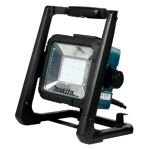
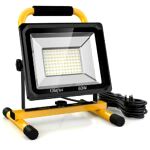
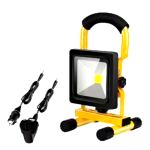
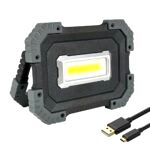
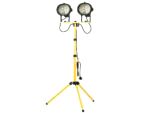
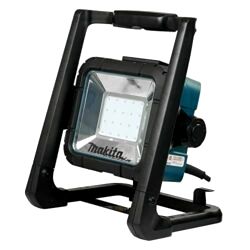
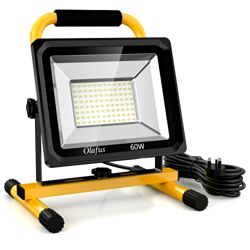
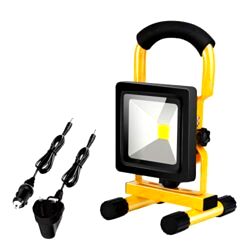
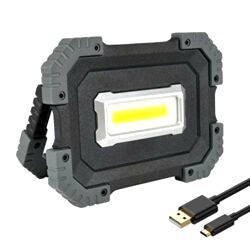
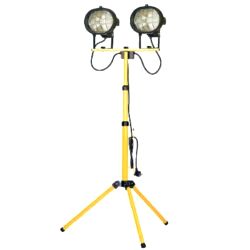

Share